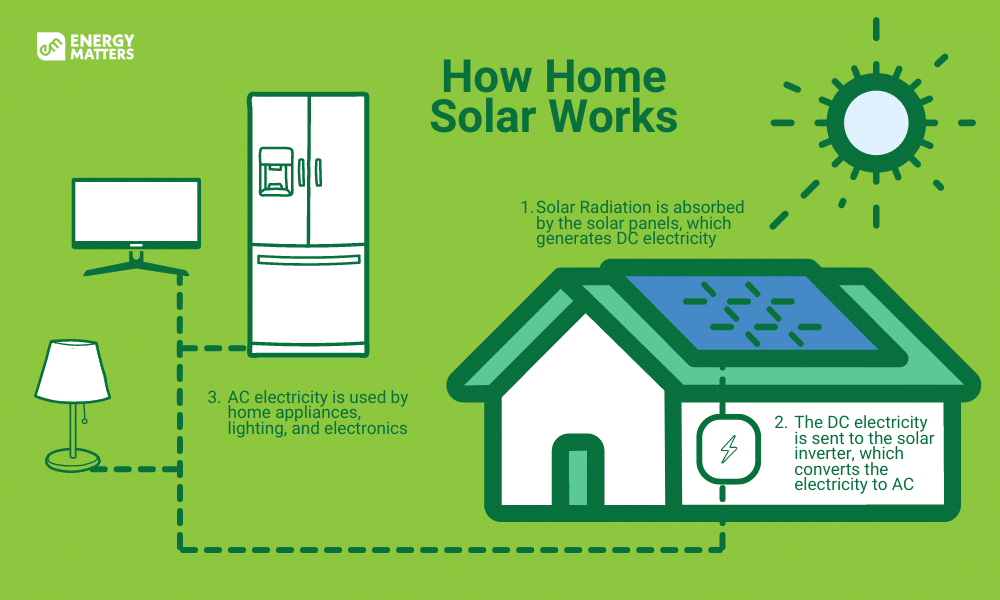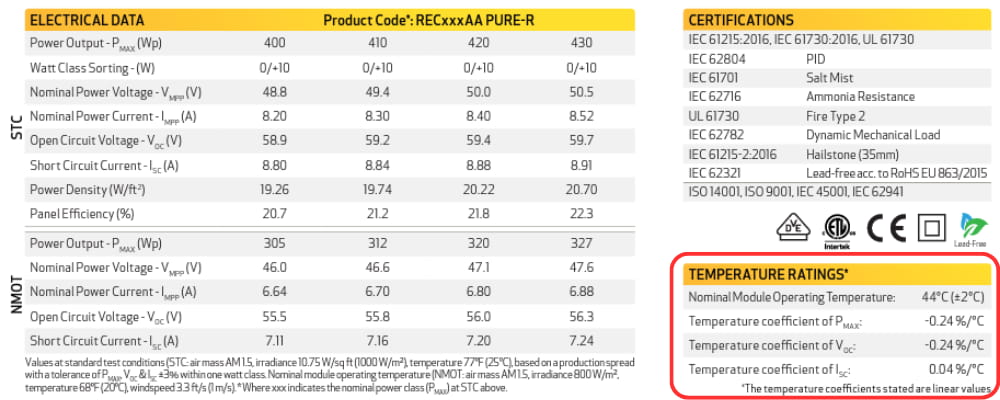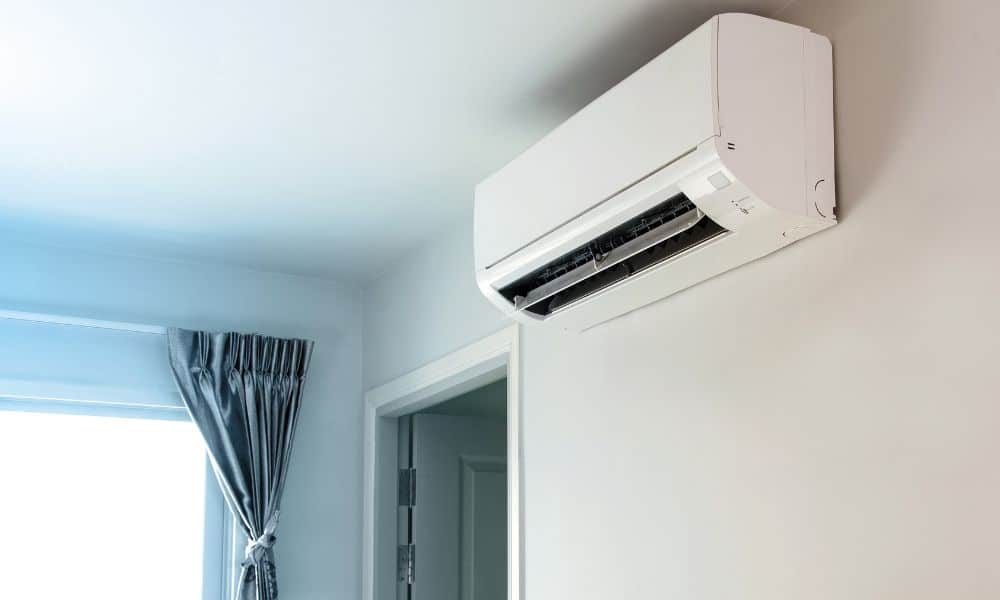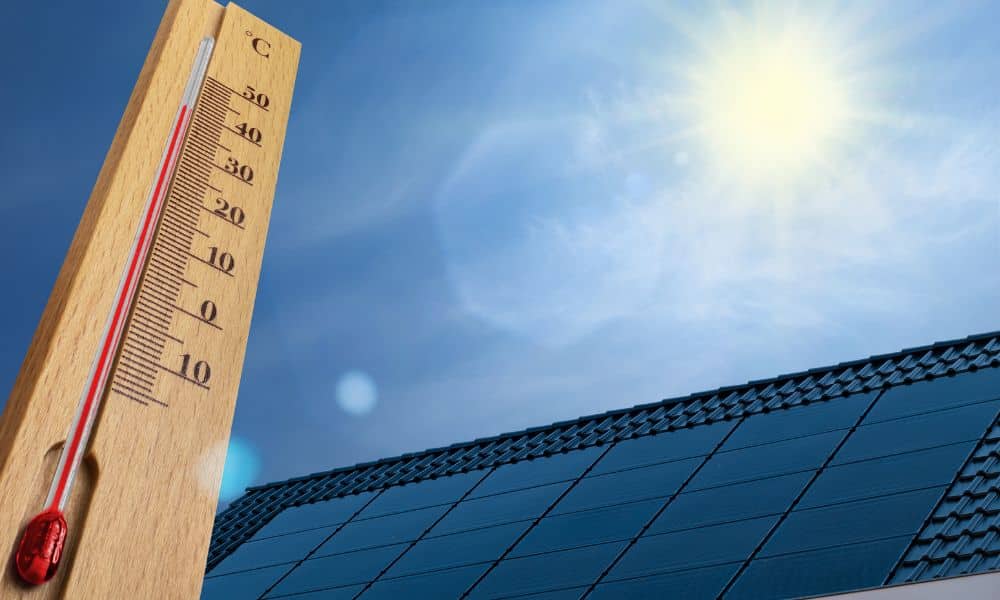Australian summers are legendary. Some pack quite the punch, with temperatures soaring into the 40s. Others can be almost spring-like with mild days and short bursts of heatwaves. What we can hang our hat on is that summer rings in months of hot weather.
So, while the sun is shining and the temperature rises, how does the heat impact the performance of solar panels? Will you see lower electricity bills when the thermometer soars? Let’s look at what you can expect with your solar system this Summer.
Heat and sunlight: Two different things
We know that solar panels use sunlight to generate electricity. This is called the photovoltaic effect, which converts sunlight into electrical energy. However, as temperatures rise, the efficiency of solar panels tends to decrease. High temperatures can cause a decrease in voltage and overall performance, leading to reduced energy production.

Your solar panels will have an optimal temperature range for maximum output. Generally, this optimal range is between 25°C to 30°C. How your solar panel will perform outside of this range will be mostly determined by the make and model. The REC Alpha Pure-R panels have an operating range of -40°C to 85°C. How they perform in sub-optimal conditions will vary, and this is where understanding the datasheet of your panel is important.
How will my panels perform as the temperature rises?
The thermal conditions surrounding a solar cell have a direct and pronounced impact on the power yield of the entire panel. As the operating temperature of a solar panel rises, the overall power output of the panel invariably diminishes.
The prevailing solar cell technology, crystalline cells, typically carry a temperature coefficient for maximum power output, which stands at approximately -0.4% per degree Celsius.
It’s worth noting that the rated power is determined under standardised conditions at 25°C. However, with each incremental temperature increase above this threshold, there comes a corresponding power reduction, roughly estimated at 1% for every 2°C elevation.
As we know with Australia’s harsh climate, solar panels frequently encounter temperatures surpassing the 25°C reference point. In fact, it’s not uncommon for temperatures to soar to 50°C and beyond.
The rate at which the solar panel’s efficiency is impacted by heat is called a Pmax. The temperature at which the panels will operate (the actual temperature of the solar panels themselves) is called the NOCT or NMOT. Generally, the data is available on the solar panel’s datasheet.
What is the temperature coefficient of my solar panel?
Let’s use the REC Alpha Pure-R solar PV panel as an example to calculate the power loss in a hot climate. We have chosen the 400W panel for this example (REC400AA Pure-R). The temperature coefficient for the maximum output power (Pmax) at Standard Test Conditions (STC) is -0.24% per degree Celsius. You can see this highlighted in the image below (Temperature coefficient of Pmax).

Now, consider a scenario where the solar cells inside this REC Alpha Pure-R module reach a temperature of 65°C. With the solar module operating at 65°C, we can calculate the power loss as follows:
Temperature Difference: 65°C – 25°C = 40°C, which represents the temperature difference between the module’s Pmax at STC and the elevated temperature of 65°C reached by the cells.
Power Loss Calculation: 40°C x -0.24% = 9.6%, indicating that the module experiences a 9.6% decrease in power output when the cells reach 65°C.
Solar Module Power Loss: -9.6% x 400W = 38.4W. Consequently, the maximum power output of this module at 65°C is 400W – 38.4W = 361.6W.
As shown in the illustration above, apart from the temperature coefficient for Pmax, there are other temperature coefficient ratings for solar PV modules:
1. Temperature Coefficient of Open Circuit Voltage (Voc): This coefficient measures how the open circuit voltage values of the PV module change with fluctuations in temperature.
2. Temperature Coefficient of Short-Circuit Current (Isc): This coefficient quantifies how the short-circuit current values of the PV module vary with alterations in the solar cell temperature.
What can I do to reduce my electricity bills during summer?
Knowing that your panels will likely be producing a little less energy when the heat swelters should help us to navigate the hot months. Let’s have a look at ways to maximise your solar system this summer:
Air Conditioners: Invest in energy-efficient air conditioning units. Your old split system may need a filter change or a complete upgrade. HVAC refrigeration systems are often the least efficient means to cool your house unless you have the ability to cool only the rooms you use. If you must use your aircon, we suggest running your system during daylight hours to maximise your solar system. Close the blinds and seal drafts to reduce potential loss of cooling. Set the temperature to 25°C to 27°C to ensure that the system runs efficiently.

Time your energy usage: Set your air conditioner to run during off-peak hours. Many electricity providers offer cheaper rates during certain times of the day. Adjusting your air conditioner’s schedule to match these hours can lead to significant savings.
Improve home insulation: A well-insulated home can reduce the workload on your air conditioner. Seal gaps, insulate your home properly, and ensure that doors and windows are airtight to maintain a cooler indoor environment.
Use fans: Ceiling fans or standing fans can help circulate cool air, making the room feel more comfortable. This allows you to set the air conditioner to a slightly higher temperature.
The bottom line
While you may see a reduction in the energy output of your solar system, you can rest assured that it will still provide power to your home even when you’re melting into your seat! Many solar panel manufacturers are designed to withstand the Australian heat, with REC displaying this in our example! We highly recommend the following manufacturers for your solar system:












































